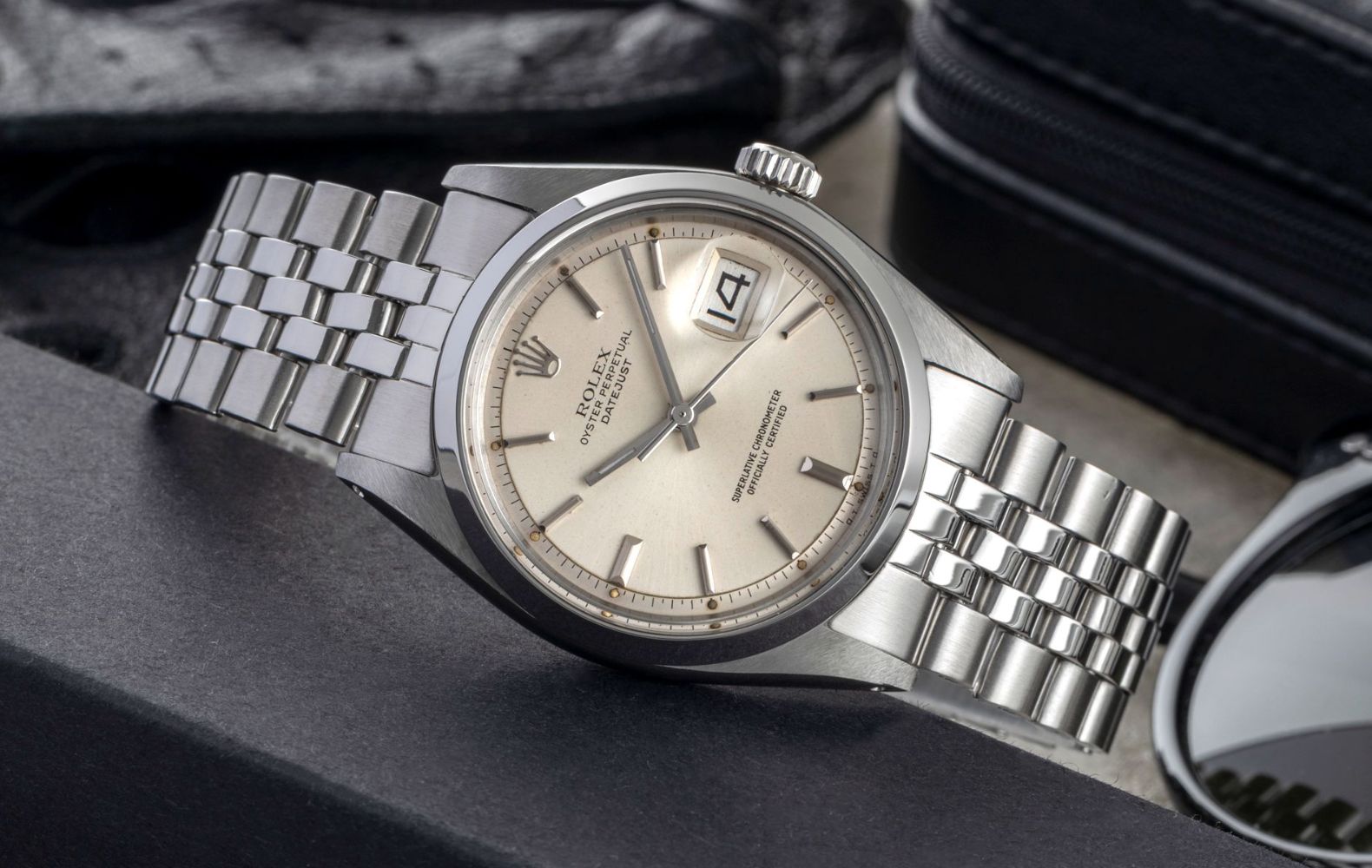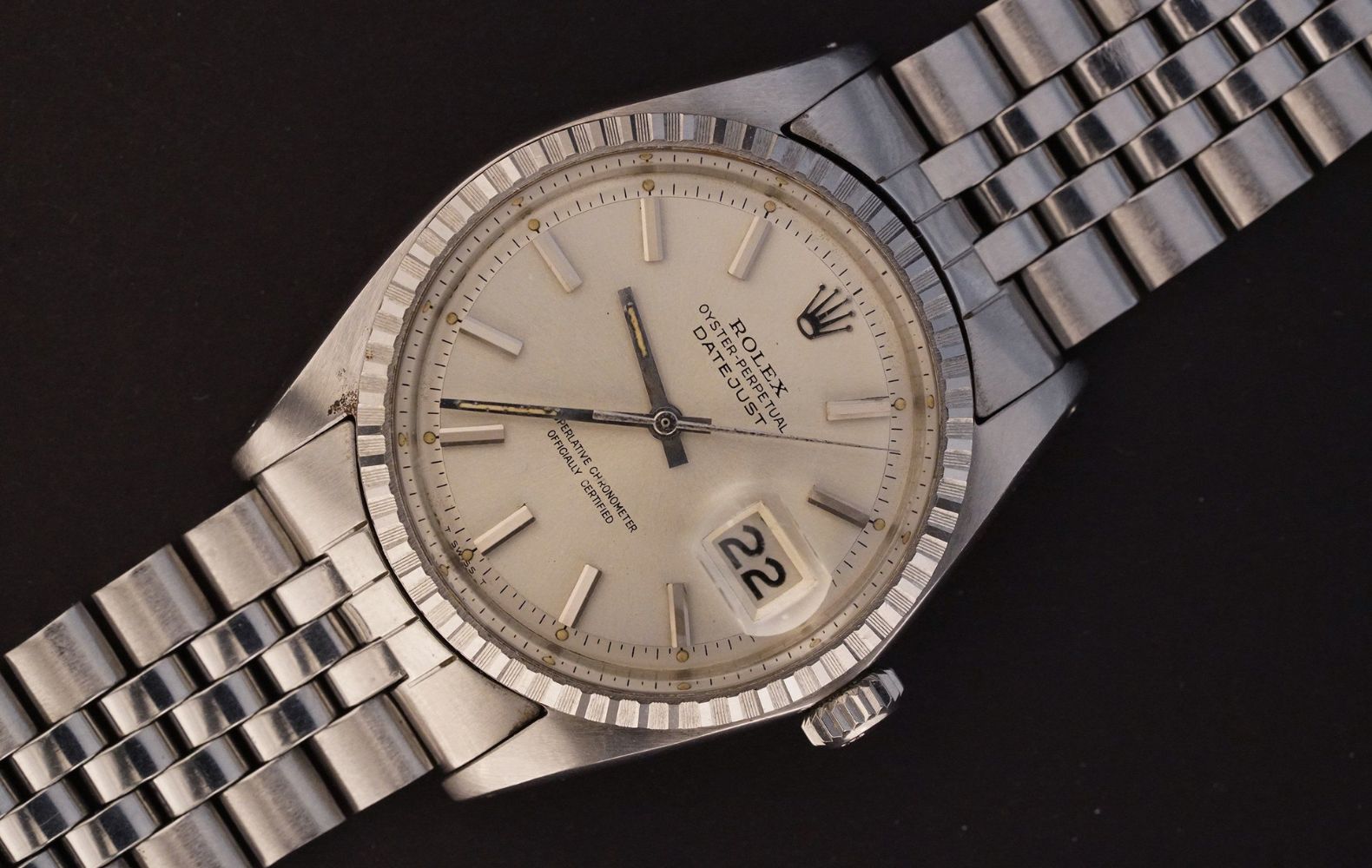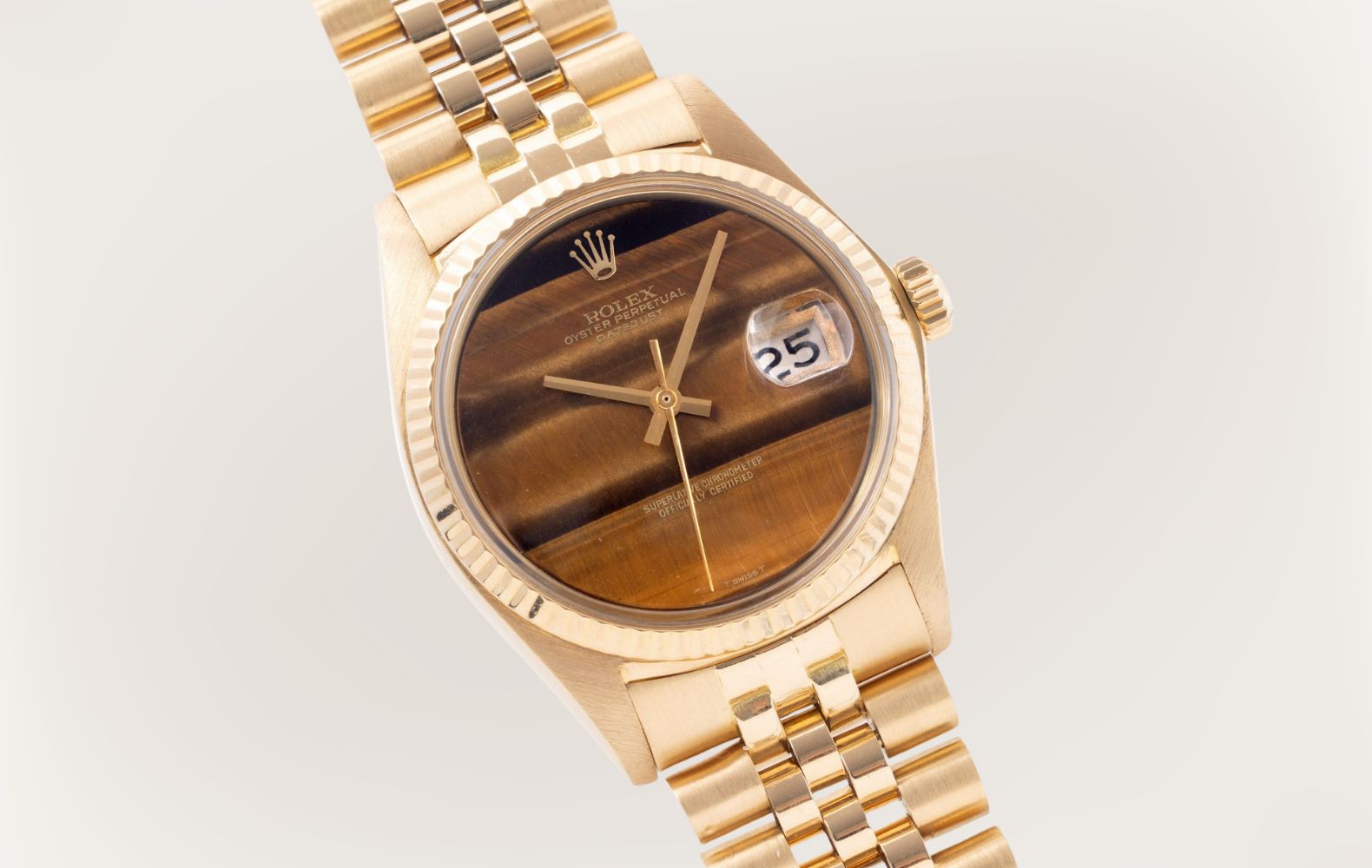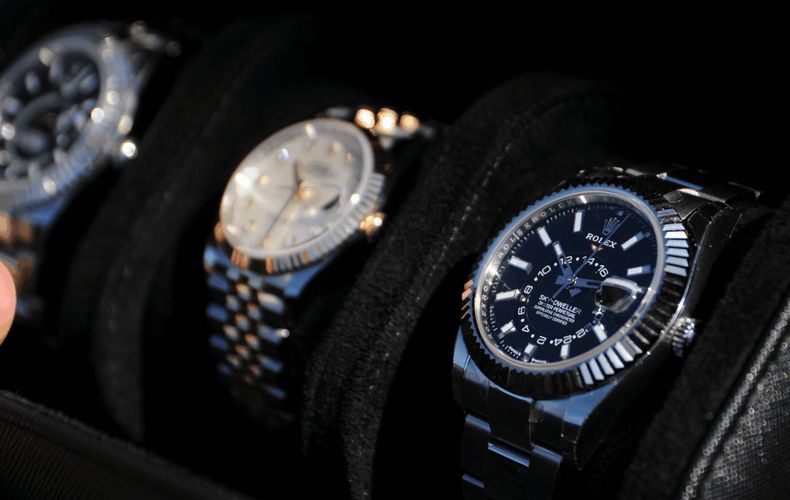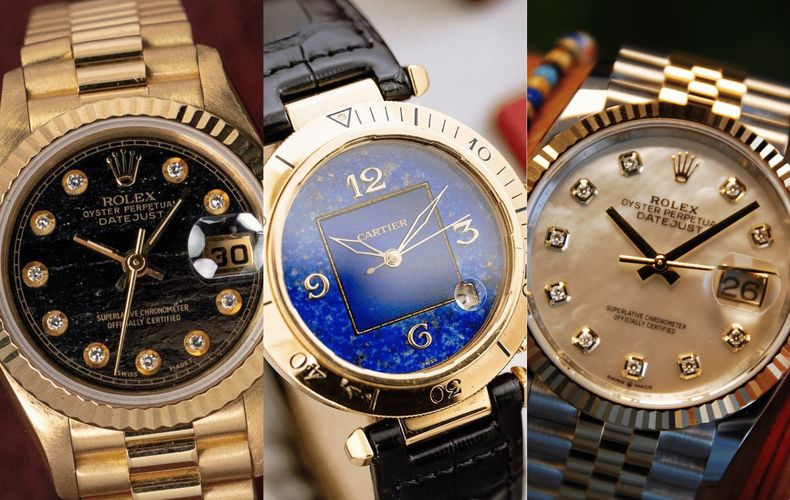Production Years & Technical Evolution
The 16xx family arrived around 1960 and stayed in rotation until the late ’70s, with a few stragglers sold into the early ’80s. The 1600 with its smooth-bezel was produced roughly from 1960 to 1977. The 1601, with its instantly recognizable fluted gold bezel, enjoyed the longest run, stretching from circa 1960 to 1981 and outlasting its siblings by a few years. The 1603, the steel-engine-turned maverick, held court from around 1960 to 1978. Even after official discontinuation, unsold stock trickled out of dealers’ cases into the early ’80s, meaning it wasn’t unusual to see a “brand new” 16xx on a wrist years after production had officially wrapped.
All three started life with the Caliber 1565 (18.000 vph), then graduated in the mid-’60s to the Caliber 1575 (19.800 vph): a higher beat rate for smoother seconds and improved accuracy. In 1972, Rolex added hacking seconds, a feature where pulling out the crown halts the second hand. It sounds minor, but for anyone syncing to a reference clock or matching time with military precision, it was a game-changer.
Quickset date? Not yet. That would come with the 5-digit 16xxx series in the late ’70s, along with the new Caliber 3035. Until then, your midnight date change was instant, but any adjustment meant a lot of crown turning.






